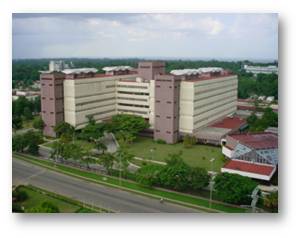Cuba’s Diabetic Foot Ulcer Treatment to EU
Patricia Grogg

HAVANA TIMES, Oct 22 (IPS) — Cuba’s biotechnology industry is hoping to conquer the European Union market with Heberprot-P, a therapeutic drug used to prevent foot amputations in patients with diabetes.
Heberprot-P, developed by the Genetic Engineering and Biotechnology Centre (CIGB), stimulates tissue healing in deep, hard-to-heal foot ulcers that frequently occur as a complication of diabetes. It was approved in Cuba in 2006 and has been in clinical use on the island since 2007.
The active principle is recombinant human epidermal growth factor (rHu EGF), a genetically engineered protein that aids skin cell repair and regeneration. It is injected directly into the wound, and its makers stress that it is the only effective therapy available for patients with chronic ulcers.
Some 300 million people worldwide have diabetes, a chronic metabolic disorder that causes high blood sugar levels.
Diabetic foot ulcers are a major cause of morbidity and mortality. In many patients these painful and disabling wounds do not respond to conventional treatment like removal of dead, damaged or infected tissue, ensuring adequate blood flow to the affected area, and antibiotic therapy. In these cases, often the only remedy is amputation.
Heberprot-P has also been approved in Algeria and several Latin American countries. In Venezuela, it has prevented permanent disability in 4,000 diabetic patients, and in Argentina it is being used as part of the standard treatment for diabetic foot ulcers.
Ernesto Lopez Mola, head of CIGB’s business and project development department, told IPS that last week, a Phase II clinical trial was given the green light at hospitals in Spain, with a view to approval of the product in that European country.
The clinical trial is part of a trade agreement between CIGB and AEMPS, the Spanish agency for medicines and healthcare products, which falls under the Ministry of Health and Social Policy. If successful, it will open the door to sales of Heberprot-P throughout the European Union.

“It is the first time we are breaking into a market of this size with one of our products,” Lopez Mola said, adding that a considerable investment has been made to ensure production standards in Cuba comply with EU regulations. “In this case, we will produce the active principle here, and Spain will complete production of the finished product for use in the trial.”
Phase I of the trial was carried out in Cuba, following AEMPS guidelines for good clinical practice, with very good results. Lopez Mola estimated that by the end of 2011 or mid-2012, after the Phase III trials are completed, the medicine will be ready for European approval.
That would be the final step allowing Heberprot-P to be launched on the EU market, comprising some 501 million people. “The experience with the drug in the EU will be decisive for its credibility. More than 4,000 Cuban patients who have been treated are also being carefully monitored” for adverse side-effects, he said.
Meanwhile, the U.S. market continues to be off-limits for Cuba because of the embargo imposed by Washington since the 1960s. “But there is no doubt that the U.S. population needs this medicine, and at some point we could come to a joint arrangement with U.S. companies,” Lopez Mola said.
According to statistics cited by Lopez Mola, there are 21 million diabetes sufferers in the United States, of whom 15 percent develop ulcers. Fifteen out of 100 of these cases eventually lead to amputations. “In economic terms, the healthcare costs for each amputated patient are said to be around 64,000 dollars,” he said.
Aside from the U.S. economic blockade against Cuba, “there is always resistance to the idea that Latin Americans are capable of producing original medicines like Heberprot-P, the only one of its kind in the world.
“Furthermore, this is a new product which, for the first time ever, is going from the developing South to the industrialized North,” Lopez Mola emphasized.
The CIGB, a leading institute in Cuban biotechnology development, held a three-day scientific congress on holistic management of patients with diabetic foot ulcers and their treatment with Heberprot-P. The meeting, which ended Friday, was attended by 300 experts from over 30 countries, including the United States.
Founded over 20 years ago, CIGB is the flagship institution of the West Havana Scientific Pole, made up of 52 research and development centers. These facilities have created 34 vaccines and other pharmaceutical products, which are sold in 40 countries.
Earnings from Cuban biotechnology are in excess of 300 million dollars a year, and the industry’s products are this country’s second most important export, after nickel. According to Luis Herrera, the head of CIGB, biotech sales may increase this year, although he did not mention any figures.





